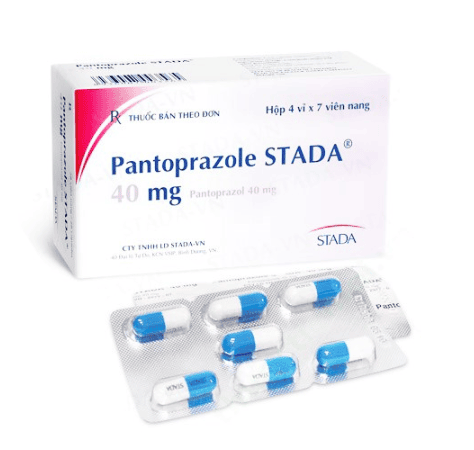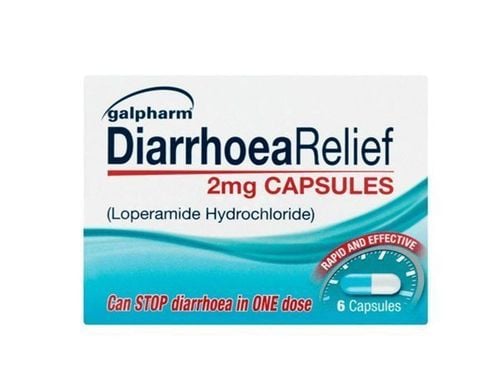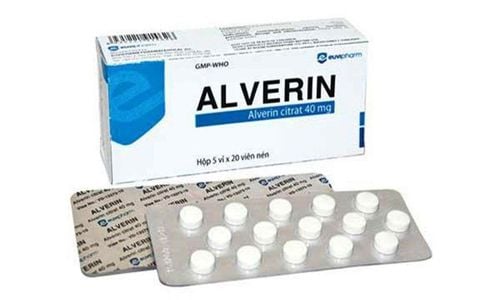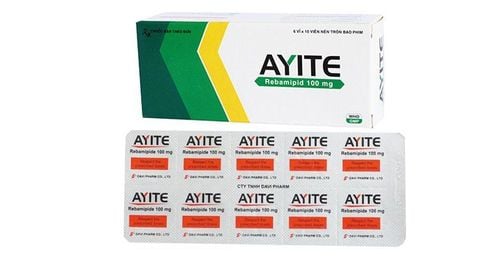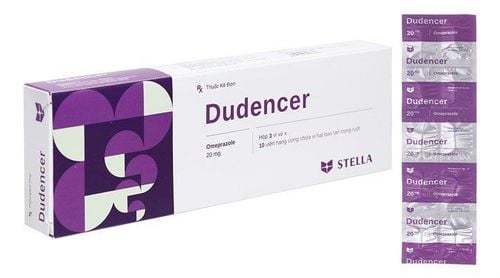This is an automatically translated article.
Rohapam is used in the treatment of gastrointestinal diseases such as gastroesophageal reflux disease, peptic ulcer, and hypersecretion caused by Zollinger-Ellison syndrome. This is a prescription drug, patients need to consult a doctor and learn some information about the uses, dosage, and notes when using Rohapam in the article below to use the drug safely and effectively.1. What is Rohapam?
Rohapam belongs to the group of gastrointestinal drugs, which are prepared in the form of enteric coated tablets. Ingredients Pantoprazole (in the form of Pantoprazol sodium) with a concentration of 40mg in Rohapam is a proton pump inhibitor, which inhibits the final stage of acid formation in the stomach by covalently binding to the enzyme system (H+, K+) )-ATPase at the secretory surface of gastric parietal cells.
This mechanism leads to inhibition of gastric acid secretion normally and by other stimulants. Binding to the (H+, K+)-ATPase system results in an anti-acid effect lasting more than 24 hours for all doses tested.
Peak plasma concentrations of the active ingredient pantoprazole are reached about 2 - 2.5 hours after oral administration. Approximately 98% of Pantoprazole will be bound to plasma proteins. Pantoprazole is extensively metabolised in the liver, mainly via the cytochrome P450 isoenzyme CYP2C19, to desmethylpantoprazole. Small amounts of pantoprazole are also metabolised by CYP3A4, CYP2D6 and CYP2C9. The metabolites are eliminated mainly in the urine, with the remainder excreted in the bile.
2. Uses of Rohapam
Rohapam is used to treat the following conditions:
Gastroesophageal reflux disease (GERD). Gastrointestinal ulcers. Prevention of gastric ulcers caused by non-steroidal anti-inflammatory drugs. Hypersecretion caused by Zollinger-Ellison syndrome.
3. Dosage, how to use Rohapam
Dosage for treatment of gastroesophageal reflux syndrome (GERD):
Usual dose: Rohapam 20-40mg x 1 time / day for 4 weeks, can prolong treatment up to 8 weeks. Maintenance dose: Rohapam 20-40mg per day. In case of relapse: Rohapam 20mg/day. Dosage for treatment of gastrointestinal ulcers:
Usual dose: Rohapam 40mg x 1 time/day. Duration of treatment is 2-4 weeks for duodenal ulcer or 4-8 weeks for benign gastric ulcer. Eradicating Helicobacter pylori requires a 1-week triple combination therapy regimen as follows:
Rohapam 40mg x 2 times/day in combination with clarithromycin 500mg x 2 times/day and Amoxicillin 1g x 2 times/day or Metronidazol 400mg x 2 times/day. Prevention of ulcers caused by non-steroidal anti-inflammatory drugs:
Rohapam dose 20mg/day. Zollinger - Ellison syndrome:
Initial dose: Rohapam 80mg/day. Doses up to 240 mg/day may be used. If taking Rohapam more than 80mg/day, it should be divided into 2 times. Patients with hepatic impairment:
Maximum dose: Rohapam 20mg/day or 40mg/day for alternate days. Patients with renal failure:
Maximum dose: Rohapam 40mg/day. How to use the drug:
Take Rohapam once a day in the morning. Swallow Rohapam tablets whole, do not crush or chew the tablets. Note: The dose of Rohapam above is for reference only. The specific dose of Rohapam will depend on your condition and the progression of the disease. To get the right dose of Rohapam, patients need to consult their doctor/pharmacist.
4. Contraindications to taking Rohapam
Rohapam is contraindicated in case the patient is hypersensitive to the active ingredient Pantoprazol or any of the ingredients of the drug or other Benzimidazole derivatives such as Esomeprazole, Omeprazol, Lansoprazol, Rabeprazol.
5. Drug interactions
Rohapam has a pH-dependent absorption of the stomach such as Ampicillin ester, iron salt, Ketoconazole, so it can increase or decrease the absorption of the drug when increasing the pH of the stomach. Rohapam Drugs Acting on the Liver Enzyme System There is a possibility of an increase in INR and prothrombin time when Warfarin is co-administered with proton pump inhibitors, including pantoprazole. Because of the risk of abnormal bleeding and death, an increase in INR and prothrombin time should be monitored when pantoprazole is co-administered with warfarin. Sucralfate may slow the absorption and decrease the bioavailability of proton pump inhibitors such as Lansoprazole and Omeprazole. Therefore, it is necessary to take a proton pump inhibitor at least 30 minutes before using Sucralfate. In order to avoid unwanted interactions when using Rohapam, patients should inform their doctor/pharmacist of all medicines, dietary supplements, vitamins and herbs... they are taking.
6. Rohapam drug side effects
Overall, Rohapam is well tolerated even with short and long term treatment. Some drug interactions may be encountered such as:
Common side effects:
Fatigue, headache; Skin rash, hives; Muscle/joint pain. Uncommon side effects:
Asthenia, dizziness, dizziness; Itchy; Increase liver enzymes. Rare side effects:
Excessive sweating; Peripheral edema; Uncomfortable; Anaphylaxis; maculopapular rash; Acne, hair loss; Exfoliative dermatitis ; Angioedema; Erythema multiforme; Stomatitis; Ợ gas, digestive disorders; Blurred vision; Fear of light. Insomnia, somnolence; Excitement or inhibition; Tinnitus; Run, confusion; Illusion, paranoia. Eosinophilia; Agranulocytosis; Decrease in white blood cells, platelets; Impotence; Hematuria; Interstitial nephritis; Hepatitis, encephalopathy in people with liver failure; Jaundice, increased triglycerides; Decreased blood sodium. If there are any abnormal symptoms suspected of using Rohapam, the patient should notify the treating doctor/pharmacist for timely treatment.
The basic information about Rohapam in the above article is for reference only. Because this is a prescription drug, patients should not arbitrarily use Rohapam, but need to contact a specialist directly to get a suitable prescription, ensuring safety for health.




